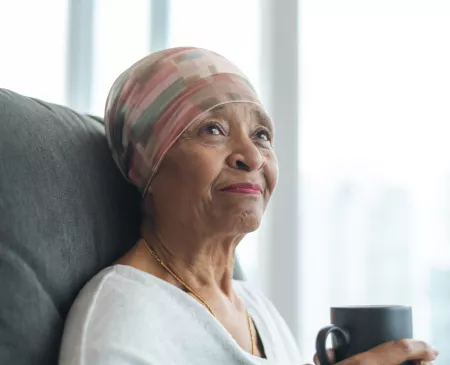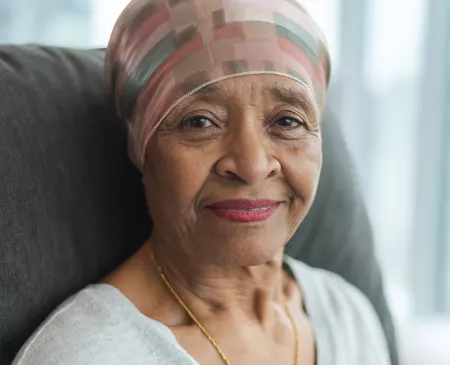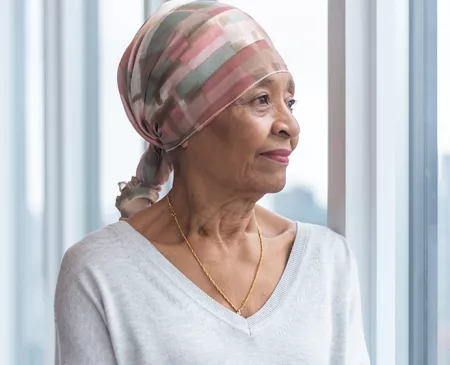Cancer programs across the country are employing a variety of new models and innovative solutions to improve access to needed care. Some of these strategies include implementation or spread of “tried-and-true” approaches, such as expanding capacity by growing the workforce or increasing productivity expectations. Others are more novel, such as creating new sites of care to support specific patient populations (e.g., urgi-care centers and survivorship clinics) and expanding telehealth services. Through survey questions and follow-up conversations, some of the nation’s leading cancer care providers shared their efforts to improve patient access and experience — their accomplishments, frustrations and continued challenges. Select findings and examples are highlighted here.
Care Team/Use of Advanced Practice Providers (APPs)
While there is significant utilization of APPs to expand capacity, how APPs are utilized — either through shared visits with physicians or independent visits — differed by program, and often by disease-based clinic within a single program.
How do you use Advanced Practice Providers within your ambulatory clinics?

Leading practice from the field:
APPs at one organization independently give care for established visits, survivorship visits and same day/urgent care visits in the clinic, and they support consults and discharge planning in the inpatient setting while also supporting remote symptom management through virtual visits. The relationship between the APPs and physicians is described as a “very strong partnership” due to careful recruitment, thorough orientation and a multi-month training program with physician colleagues. This type of leading practice — unfortunately, all too rare — increases clinic capacity and streamlines access to care.
Dedicated Oncology Urgi-Care Centers
Nearly half of respondents (48 percent) have a dedicated oncology urgi-care center with extended hours to offer patients expedited treatment and care for common cancer-related complications, including infections, shortness of breath, nausea/vomiting and neutropenic fevers. An additional 19 percent have design and build plans underway. The greatest benefits of urgi-care centers are improved patient experience and reduction of avoidable hospitalizations and emergency department (ED) visits.
Does your cancer center have a dedicated oncology urgi-care/symptom management center/clinic?

Virtual Care Visits
At the time of the survey, most respondents reported using virtual care visits (either across or within select sub-specialties) or were planning to roll them out within the next year for patients who do not require a physical exam or procedure (e.g., symptom checks, return visits and navigation visits). However, a notable 38 percent of respondents were not offering and had no plans to offer virtual care within the next year. This result is one of the most highly impacted by the COVID-19 pandemic, as virtual care services quickly accelerated across the healthcare industry to meet patients’ needs during this crisis. However, many of these increases have not been sustained — at least not fully — though they have proven that virtual visits are a viable option. Cancer programs will need to build upon recent advances in telehealth by fully integrating and hardwiring new workflows, policies and expectations to maintain virtual visits where appropriate in order to expand access. There are many benefits realized through virtual care visits. For patients and their caregivers, virtual visits remove the hassle of travel and parking, and they limit exposure to pathogens such as COVID-19. For cancer centers, virtual visits extend the reach of providers and free up space and resources within the clinic to open additional new patient appointment capacity. COVID-19 provided the impetus for rapid expansion of virtual visits at many cancer centers; virtual visits will likely continue to be an important mode of care, given the many benefits to both patients and providers, and the continued risks specific to COVID-19.
Second Opinion Programs
In some cancer centers, a significant portion of new patient visits are second opinions, and many of these patients may not continue with treatment at the institution. Only seven survey respondents provide a formal Second Opinion Program, in which patients can come on-site to see a provider. Of these, three also provide patients with a virtual second opinion option. Chartis has seen a growing number of organizations partner with an external vendor to offer second opinions. The third-party acts as the primary interface between the patient and the cancer center, collecting patient records, working with a select group from within the cancer center to evaluate records and gather patient results, and educating the patient about treatment options.
What best describes your second opinion program?

Survivorship Programs
There are currently 16.9 million cancer survivors in the United States. Estimates suggest that by 2030, the population of cancer survivors will increase to more than 22.1 million.1 Most cancer centers surveyed (86% of respondents) have a formal Survivorship Program, either embedded within specialty-specific clinics or supported by an independent clinic. While the format and location of the survivorship programs differ, most have a shared goal: to provide access to patients to meet their physical and emotional needs after treatment, and free up provider capacity for new patients and those undergoing treatment.
Availability of Survivorship Program

Navigation Services
In follow-up conversations with survey respondents, many indicated their navigation services are critical to helping patients understand how best to access care along their care journey. When access questions or issues arise, navigators act as internal advocates for the patient, working with schedulers and clinicians to create an efficient schedule that ensures the patient receives all required treatments and services.
As these survey findings reflect, cancer programs are implementing a variety of foundational and more-advanced strategies to address growing patient need amidst unprecedented care delivery challenges. Organizations will need to build on their recent advances in areas such as virtual care services, effective care team and APP utilization, and dedicated programs for specific patient populations to ensure timely access to needed services and treatment, regardless of what the future brings.
Our third and final article in this series focuses on specific tactics and practical recommendations that cancer centers can employ to increase access and improve patient experience.
© 2025 The Chartis Group, LLC. All rights reserved. This content draws on the research and experience of Chartis consultants and other sources. It is for general information purposes only and should not be used as a substitute for consultation with professional advisors.
Source
1 Cancer Treatment & Survivorship: Facts & Figures 2019-2021. American Cancer Society.







